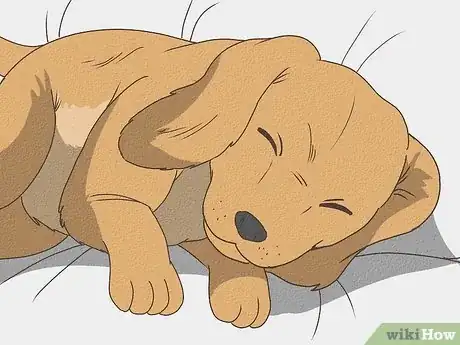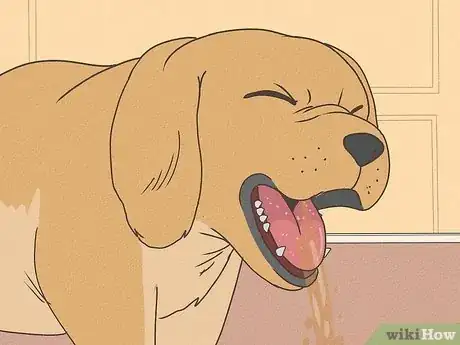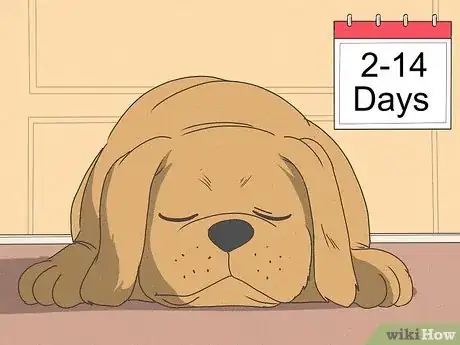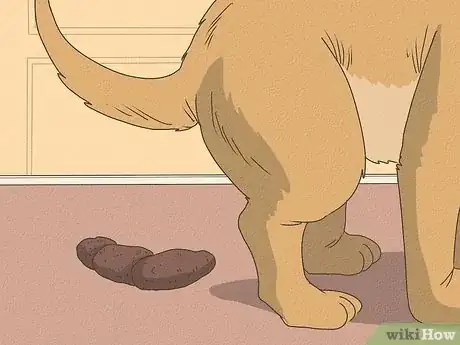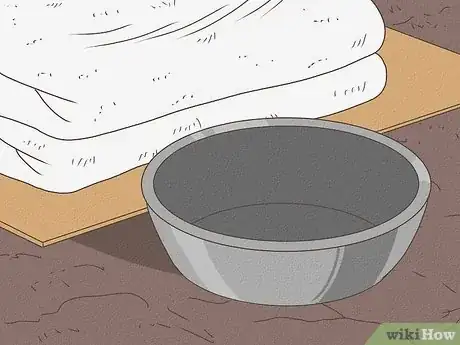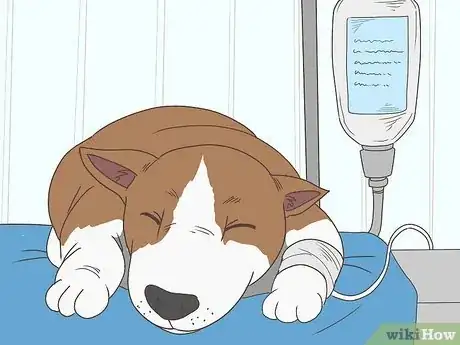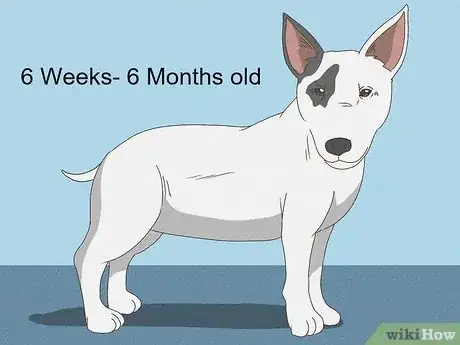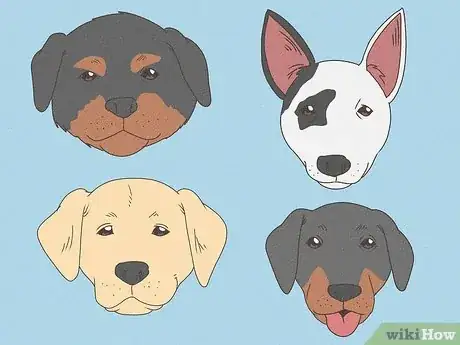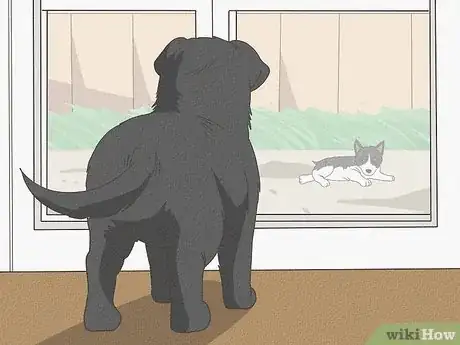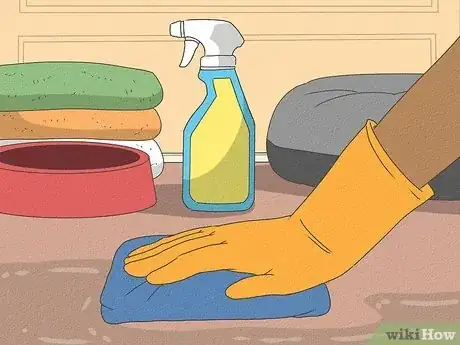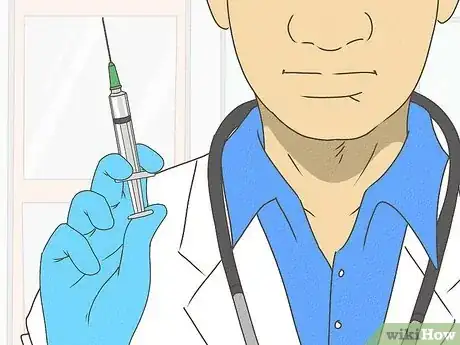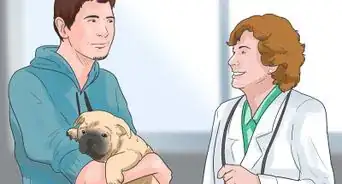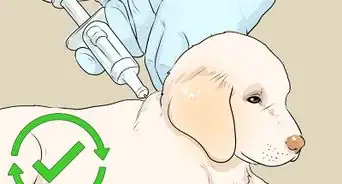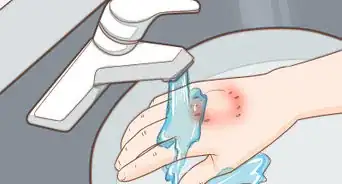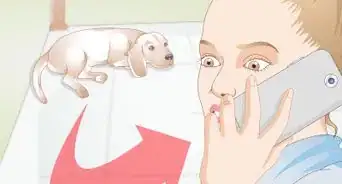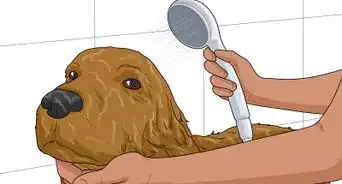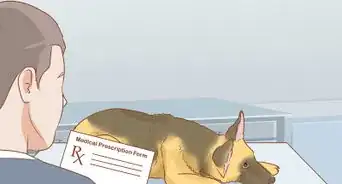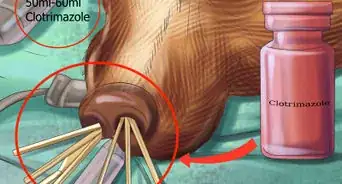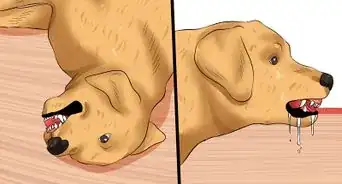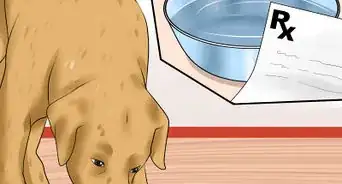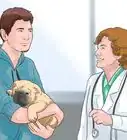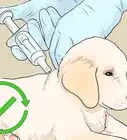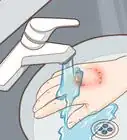This article was written by Ray Spragley, DVM and by wikiHow staff writer, Janice Tieperman. Dr. Ray Spragley is a Doctor of Veterinary Medicine and the Owner/Founder of Zen Dog Veterinary Care PLLC in New York. With experience in multiple institutions and private practices, Dr. Spragley’s specializations and interests include non-surgical management of cranial cruciate ligament tears, Intervertebral Disk Disease(IVDD), and pain management in osteoarthritis. Dr. Spragley holds a BS in Biology from SUNY Albany and has a Doctor of Veterinary Medicine degree (DVM) from Ross University School of Veterinary Medicine. He is also a Certified Canine Rehabilitation Therapist (CCRT) through the Canine Rehab Institute as well as a Certified Veterinary Acupuncturist (CVA) through Chi University.
There are 7 references cited in this article, which can be found at the bottom of the page.
TikTok is no stranger to heart-breaking posts, but few videos are as heart-wrenching as the accounts of “parvo puppies,” or pups that have contracted canine parvovirus (CPV). These tragic videos can be pretty scary, but parvo isn’t as hopeless as these TikToks may lead you to believe—with prompt and thorough treatment, many dogs have great odds of survival.[1]
We’re here to answer all of your questions about CPV, so you can be as informed as possible when it comes to this illness.
This article is based on an interview with our doctor of veterinary medicine, Ray Spragley, owner/founder of Zen Dog Veterinary Care PLLC. Check out the full interview here.
Things You Should Know
- Canine parvovirus (or “parvo”) is a contagious, GI-based virus that can infect unvaccinated puppies and dogs.
- Watch for symptoms like vomiting, sluggishness, diarrhea, a lack of appetite, and fever—these are all signs that a dog could have parvo.
- Take your pup to the vet ASAP so they can get diagnosed and treated right away. Treatment typically involves fluid-based therapy and antibiotics.
- Vaccinate your puppy to prevent them from getting parvo, and avoid bringing them around other dogs until they’re fully vaccinated.
Steps
References
- ↑ https://vetmed.illinois.edu/pet-health-columns/parvovirus/
- ↑ https://vetmed.illinois.edu/pet-health-columns/parvovirus/
- ↑ https://ebusiness.avma.org/files/productdownloads/parvo_brochure.pdf
- ↑ https://vetmed.illinois.edu/pet-health-columns/parvovirus/
- ↑ https://ebusiness.avma.org/files/productdownloads/parvo_brochure.pdf
- ↑ https://www.merckvetmanual.com/digestive-system/diseases-of-the-stomach-and-intestines-in-small-animals/canine-parvovirus
- ↑ https://vet.osu.edu/sites/vet.osu.edu/files/documents/preventive-medicine/Canine%20Parvovirus%20Fact%20Sheet%202018-07_0.pdf
- ↑ https://www.merckvetmanual.com/digestive-system/diseases-of-the-stomach-and-intestines-in-small-animals/canine-parvovirus
- ↑ https://ebusiness.avma.org/files/productdownloads/parvo_brochure.pdf
- ↑ https://www.in.gov/boah/files/Parvo_Updated_2012.pdf
- ↑ https://vet.osu.edu/sites/vet.osu.edu/files/documents/preventive-medicine/Canine%20Parvovirus%20Fact%20Sheet%202018-07_0.pdf
- ↑ https://vet.osu.edu/sites/vet.osu.edu/files/documents/preventive-medicine/Canine%20Parvovirus%20Fact%20Sheet%202018-07_0.pdf
- ↑ https://www.in.gov/boah/files/Parvo_Updated_2012.pdf
- ↑ https://www.vet.cornell.edu/departments-centers-and-institutes/riney-canine-health-center/health-info/parvovirus-transmission-treatment
- ↑ https://vet.osu.edu/sites/vet.osu.edu/files/documents/preventive-medicine/Canine%20Parvovirus%20Fact%20Sheet%202018-07_0.pdf
- ↑ https://www.merckvetmanual.com/digestive-system/diseases-of-the-stomach-and-intestines-in-small-animals/canine-parvovirus
- ↑ https://vet.osu.edu/sites/vet.osu.edu/files/documents/preventive-medicine/Canine%20Parvovirus%20Fact%20Sheet%202018-07_0.pdf
- ↑ https://www.merckvetmanual.com/digestive-system/diseases-of-the-stomach-and-intestines-in-small-animals/canine-parvovirus
- ↑ https://www.in.gov/boah/files/Parvo_Updated_2012.pdf
- ↑ https://www.merckvetmanual.com/digestive-system/diseases-of-the-stomach-and-intestines-in-small-animals/canine-parvovirus
- ↑ https://ebusiness.avma.org/files/productdownloads/parvo_brochure.pdf
- ↑ https://health.dekalbcounty.org/canine-parvovirus-warning-take-precautionsto-keep-your-dog-safe/
- ↑ https://vet.osu.edu/sites/vet.osu.edu/files/documents/preventive-medicine/Canine%20Parvovirus%20Fact%20Sheet%202018-07_0.pdf
- ↑ https://www.in.gov/boah/files/Parvo_Updated_2012.pdf
- ↑ https://vetmed.illinois.edu/pet-health-columns/parvovirus/
- ↑ https://vet.osu.edu/sites/vet.osu.edu/files/documents/preventive-medicine/Canine%20Parvovirus%20Fact%20Sheet%202018-07_0.pdf
